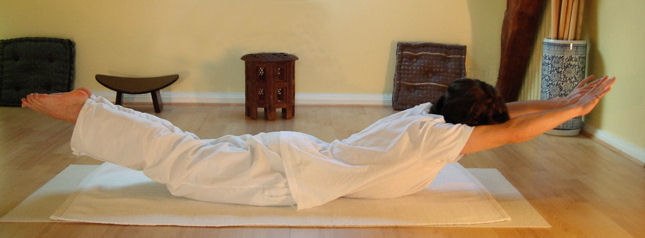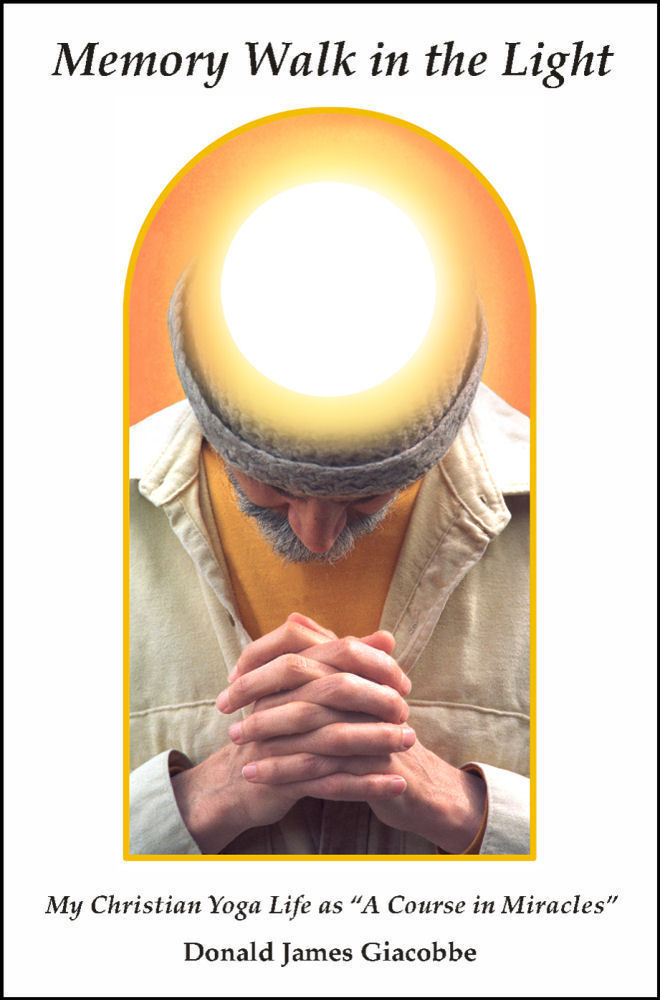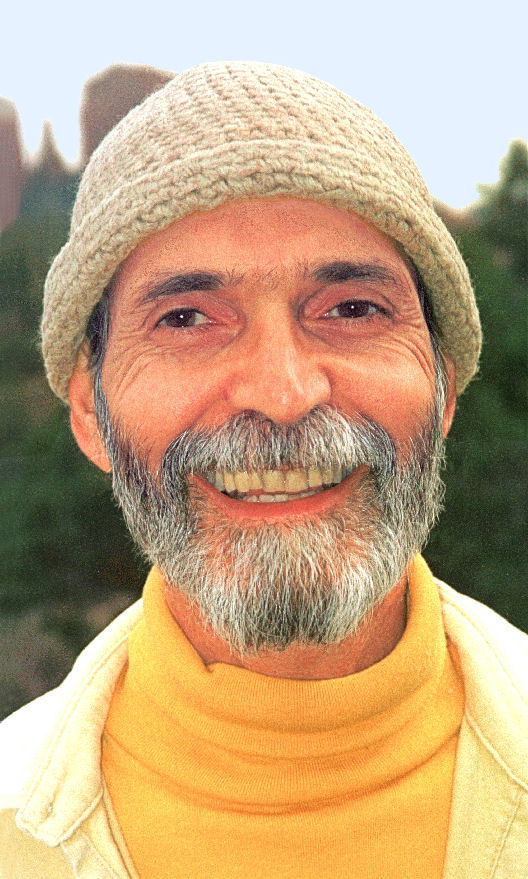Christian Hatha Yoga

CHRISTIAN HATHA YOGA USED IN MIRACLE RAJA YOGA
The
most familiar form of yoga to
Christians is hatha yoga, which is yoga of the physical body. This type
of yoga
involves the use of body postures and breathing practices and is the
most
commonly accepted form of yoga. However, its true purpose is often
overlooked. In
America, hatha yoga has been largely stripped of its spiritual
significance and
has been viewed only as a means of maintaining the physical health of
the body.
The original spiritual purpose of hatha yoga, as it was created
thousands of
years ago, was to develop the body as a healthy device for the purpose
of
practicing sitting meditation in order to transcend the physical world.
Consequently,
for hatha yoga you can have
one of two distinctly different meanings, depending upon what you are
seeking in
the way of content from your yoga practice. If you are seeking physical
health,
then yoga would be the means to that end of good health. On the other
hand, if
you are practicing yoga so you can meditate better and improve your
chances of
spiritual transformation, then yoga would be the means and Christ would
be the
end. The latter could rightly be called “Christian hatha yoga,” while
the
former could not. However, it should be remembered that hatha yoga
itself is
universal, of course, and therefore it can be adapted as a means of
growing toward
any spiritual ideal.
Miracle
Yoga specifically based on the
Course includes hatha yoga as part of Miracle Raja Yoga. Because
Miracle Raja
Yoga focuses on encouraging meditation and contemplation, Christian
hatha yoga
performs the useful service of preparing the body as a healthy vehicle
for
practicing inner attunement. The Course indicates that the body itself
is
neutral. As with all concerns, the Course always directs you to ask
“What is it
for?” Some forms of hatha yoga can be directed toward making the
physical body
an end in itself. However, according to the Course, it is unwise to
allow the
body to be an end in itself. Instead, the Course maintains that the
only useful
purpose of the body is for it to be a “communication device.” As such,
the body
can be used beneficially as a means of joining in common purpose with
others to
recognize the divine in others and in yourself. Your body can help you
to
communicate with others to show them that they are not bodies, but
rather
spiritual beings. This recognition of the true spiritual nature of
others and
of yourself is the purpose of Miracle Yoga in general. Also, the body
can be
used as a vehicle for meditation, in which you can communicate with the
divine
within. This inner communication can not only be with God and with the
Holy
Spirit, but also with your brothers and sisters in Christ. This inner
communion
is the goal of Miracle Raja Yoga, and Christian hatha yoga can prepare
the body
for experiencing this inner attunement.
The
autobiography Memory Walk in the Light
offers instructions and illustrations of the most basic yoga postures
and some
breathing practices. However, there is not just one kind of hatha yoga
that
could be used by someone who wants to practice Miracle Raja Yoga based
on the
Course. Any form of hatha yoga would be acceptable for Miracle Raja
Yoga, but
Christian hatha yoga would be preferable.
Christians
who are teachers of hatha yoga
may think of their own personal practice as “Christian hatha yoga” or
simply
“Christian yoga.” Nevertheless, they are often called upon to teach in
colleges
and other non-sectarian settings. This presents a dilemma for the yoga
teacher
who seeks to focus on more than just physical health, yet cannot express
spirituality in an overt manner. A
compromise appropriate to these non-sectarian settings is to talk about “hatha
yoga for a calm mind.” This would likewise include discussing “breathing
practices for a calm mind.” The purpose of having a calm mind is an acceptable
universal goal for hatha yoga postures and breathing practices because this
goal is understandable and acceptable to those who want physical health and to
seekers of spirituality.
Hatha
yoga is the third member of
traditional Hindu raja yoga and likewise the third member of Miracle
Raja Yoga,
related to holding the body in an “asana,” which means steady pose. The
benefits from the body postures come from holding steady poses in order
to
stretch the body without straining. Stretching muscles, ligaments, and
tendons
helps to increase flexibility and suppleness. Sometimes when doing
various
postures you may feel one particular area of the body that is being
stretched. While
holding the posture you can bring the awareness of your mind to that
area that
is being stretched. You can also simultaneously repeat the Name of
Jesus, if you
feel guided to do so. Repeating the Name of God is recommended in the
Course. When
you have your awareness on the stretch, you do not strain or pull
harder, but
just relax into the stretch.
The
yoga postures have a beneficial effect
on the endocrine glands that regulate the body functions. The body
postures
also work on the nervous system to calm the nerves, which leads to a calm
mind. In
fact, seeing hatha yoga as a means of calming the mind is the proper
understanding of the true purpose of this discipline. The yoga postures
enhance
your potential for spiritual transformation by keeping the spine
flexible,
which ironically enables the back to remain comfortably motionless in
meditation. A strong body is also needed to withstand the impact of the
rising
of the kundalini.
The
fourth member of Hindu raja yoga and
Miracle Raja Yoga is called pranayama and has to do
with controlling the
prana, the vital energy of the body, through breathing practices. These
breathing practices, when employed in moderation, can be very important
in
purifying the channels within the body that assist the practice of
meditation. Both
the postures and the breathing practices of hatha yoga are recommended
as a
daily practice because of the physical and spiritual benefits. However,
reading
about these spiritual disciplines online or in books is not the best
resource
for learning these practices. Ideally if you decide that you are
interested in
the practice of hatha yoga, it would be best to seek out a local hatha
yoga
instructor.
The
easiest and simplest way to do this is to take a hatha yoga course
lasting six,
seven, or eight weeks. These courses are often offered privately by
instructors
and many health food stores have bulletin boards that advertise local
yoga
classes. Many community colleges or regular colleges have yoga courses
available and sometimes these are part of the continuing education
programs. Also
city recreation departments sometimes offer yoga classes. You will
probably not
find any class identified as “Christian hatha yoga,” since
hatha yoga
is usually taught as a health practice in a non-religious setting. This
is fine
since it would probably be best to have a teacher who is not
affiliated with a
religious group. In this case, you can be shown how to practice the
techniques,
and you can mentally add your own spiritual meaning to what you learn.
If you
practice some hatha yoga and want a
more in-depth experience, you may possibly want to temporarily live in
a yoga
community, but you must be cautious if you do so. You must resist the
temptation to dilute or lose your distinctly Christian identity in the
name of
universality. If the community has a guru, and if you decide to receive
mantra
initiation from the guru, this would be an example of lessening your
Christian
identity. Of course, that would be your choice, but why would you, as a
Christian, want a mantra given to you by a guru? Will the yoga guru
give you a
better mantra than the Name of Jesus? Why would you want to replace
Jesus, who
is already your guru?
If you
are living in a yoga community, you
will see so many others follow this path of guru initiation that you
will be
tempted to do likewise. Jesus will, of course, bless you whether you
turn right
or left, but why let go of His hand? You will be tempted to think that
you are
being humble by submitting to the guru. But by taking the guru’s hand,
you show
that you do not really believe you already have the hand of Jesus. Your
lack of
faith in Jesus cannot produce progress on the path to Christ.
Other
than this temptation, much good can
come from temporarily living in a yoga community. It would be ideal if
you
could find a Christian yoga community, but I am not aware of any such
community, although hopefully this will manifest at some time in the
future. You
could also go to a yoga retreat, especially a silent retreat. An ideal
retreat
for the intermediate seeker would be a Christian retreat which includes
yoga
and the extensive practice of meditation. After receiving yoga training
of some
kind, you will be able to incorporate what you have learned into your
ongoing
private Christian hatha yoga practice, preferably on a daily basis.
Some
students of hatha yoga become very
enthusiastic and do a lot of yoga initially and then discontinue the
practice. Actually,
it would be much more beneficial to do a limited set of practices for a
short
period of time each day and make a commitment to yourself to make this
a
lifetime practice. You do not have to be physically well conditioned or
athletically gifted to practice hatha yoga postures. Also, you do not
have to
perform the postures flawlessly in order to benefit from them. You can
proceed
at your own pace, learning how to gently stretch the body without
causing any
strain. After doing the postures for an extended period of time, you may
notice
that you can stretch further than you could when you first started, but
your
progress is not primarily a matter of how well you can perform the
postures at
a form level.
Content
is more important than form in the
practice of Christian hatha yoga. Consequently, what is happening in your
mind
takes precedence over how proficient the body is in executing postures.
The
motivation of your mind, your purpose, is the most important element in
your
practice of Christian hatha yoga. If you practice Christian hatha yoga
with a
halfhearted motivation, you will get halfhearted results. One of
the very
reasons why I emphasize hatha yoga as “Christian hatha yoga” is so you
will
keep the end always in mind as your motivation while practicing the
means. By
focusing on your yoga as your means and your union with Christ as your
end,
your practice of Christian hatha yoga will be as natural and effortless
as
breathing. Your faith in Christ is the key to your success with
Christian hatha
yoga.
Click here
for "Miracle Raja
Yoga"
Memory Walk in the Light:
My Christian Yoga Life as
"A Course in Miracles"
Author:
Donald James
Giacobbe
“The central message of the Course
is forgiveness, and the key to yoga is opening to the divine presence.
As a
teacher of Miracle Yoga based on Course principles, my goal is to live
my life
as an expression of forgiveness and openness to the experience of
Spirit.”
Listen to "Authors's Radio Interview"
Back
to "Home"

